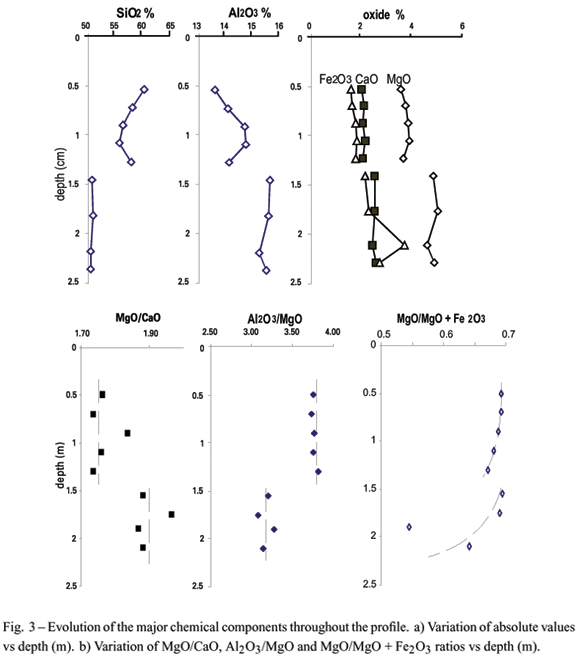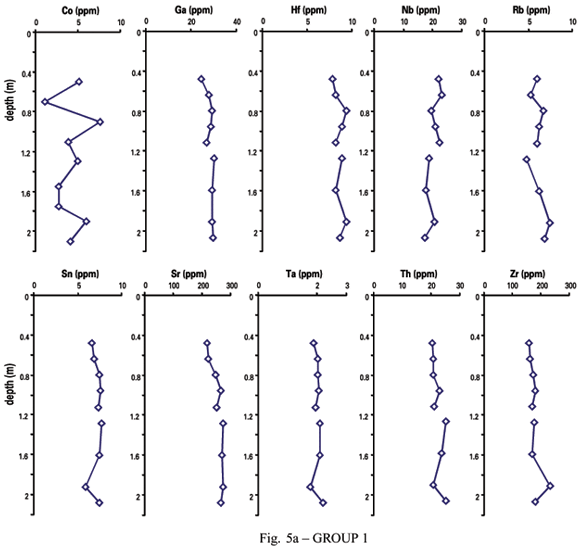A Permian bentonite deposit at Melo, Uruguay is composed of a calcite-cemented sandstone containing clay pseudomorphs of glass shards (0-0.50 m) overlying a pink massive clay deposit (0.50-2.10m). The massive bed is composed of two layers containing quartz and smectite or pure smectite respectively. The smectite is remarkably homogeneous throughout the profile: it is a complex mixed layer composed of three layer types whose expandability with ethylene glycol (2EG 1EG or 0EG sheets in the interlayer zone which correspond to low-, medium- and high-charge layers respectively) varies with the cation saturating the interlayer zone. The smectite homogeneity through the profile is the signature of an early alteration process in a lagoonal water which was over saturated with respect to calcite. Compaction during burial has made the bentonite bed a K-depleted closed system in which diagenetic illitization was inhibited. Variations in major, REE and minor element abundances throughout the massive clay deposit suggest that it originated from two successive ash falls. The incompatible element abundances are consistent with that of a volcanic glass fractionated from a rhyolite magma formed in a subduction/collision geological context.
bentonite; REE; incompatible elements; mixed-layer minerals; Uruguay















